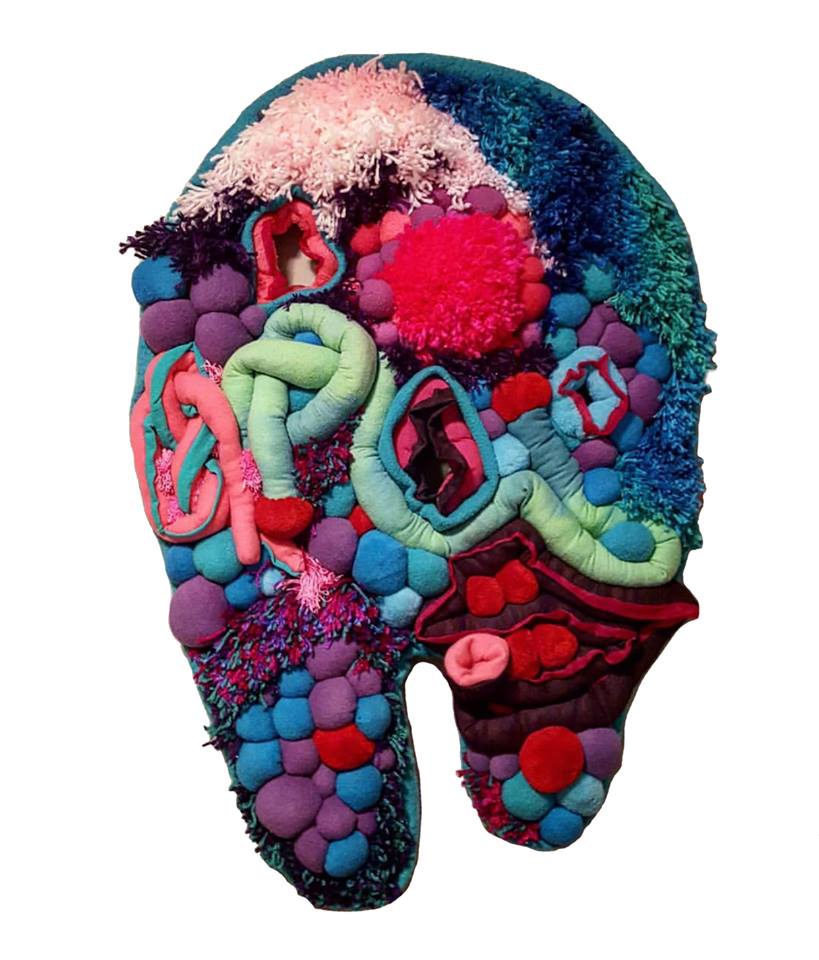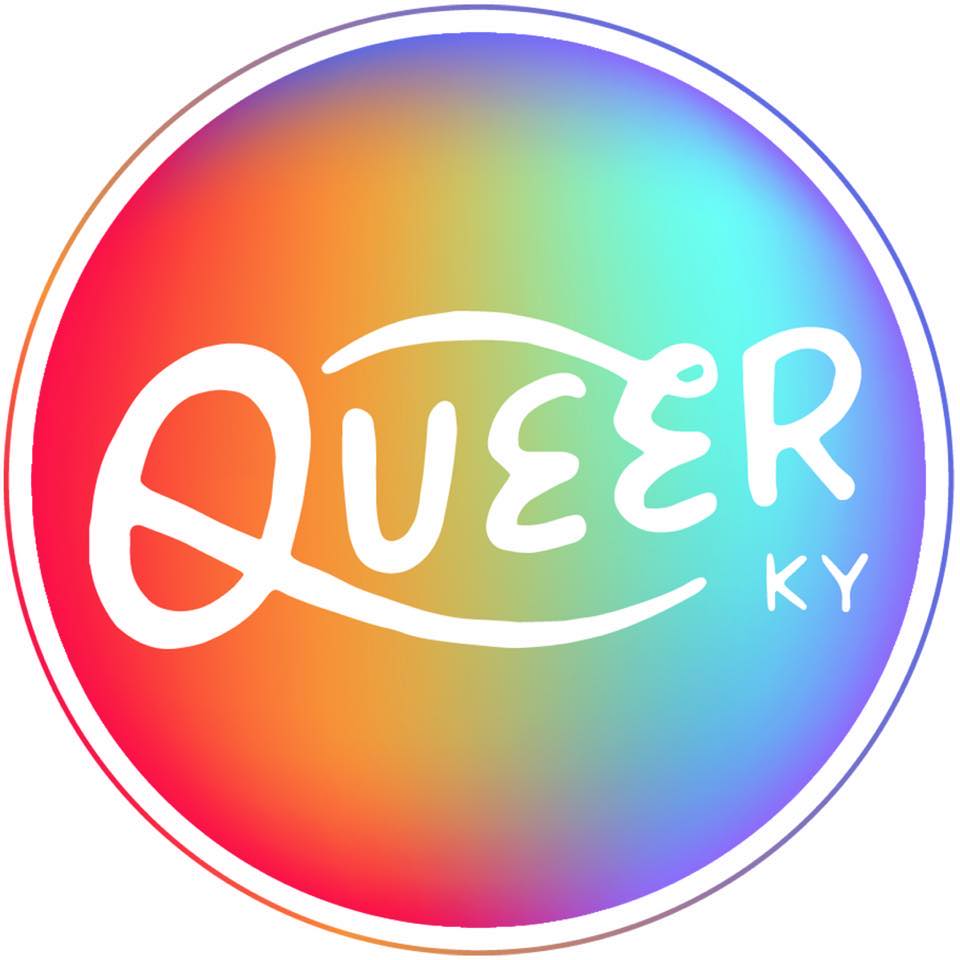
ABOVE: Install of Unveiled
︎ Quappi Projects, Louisville
Unveiled
Review
Young people often serve as underappreciated innovators within creative trades. They are seldom at the center of widely celebrated collections, lacking the time vested in the profession to ascend through the social order of collectors, museum professionals, and posh galleries--the sites of contemporary tastemaking. Still, these artists are often the ones who weave new social concepts into their work and fearlessly confront conventions, all qualities that enrich our greater artistic culture and future visual language. In all its interdisciplinary, conceptually speculative, technicolor revelry, Unveiled by emerging artist Jake Ford is a welcome contribution to Louisville’s art scene.
Ford sees his own work as a bridge between the viewer’s unrestricted inner self and the curated public-facing persona they create for fear of societal retribution. A theme throughout the work is an element of disarming playfulness in texture and form. The viewer is invited to inhabit and romp within costumes and settings throughout the exhibition. In his most successful works, Ford creates a space in which the unencumbered human urges to touch, smell, lust, and celebrate are engaged fully, interactivity is prioritized, and overcoming an initial impulse not to touch the art is implicitly encouraged.
Ford’s body of work on display in Unveiled can be defined by two main categories. First, near the gallery’s entrance, the viewer is met with a collection of loosely 2-dimensional collages of paint, paper, or fabric. Further within the gallery, the viewer experiences a group of decidedly 3-dimensional wearable costumes and installations. All works have a palpable emphasis on textural richness and variety, while highly saturated color is everywhere.
Ford eases the viewer into his vision with several small-scale mashups of mildly grotesque body parts and portraits splayed across colorful backgrounds in works such as Mammary Field, Kardia Fracture, and Not Your Typical Meat, drawing the viewer in for further examination. Around the corner is a collection bulging collages of curiously “found” clothing and underwear that, perhaps purely in relationship to his other work on display, seem somewhat unresolved, as if missing some source of contrast or pop relative to their shiny counterparts across the room. Even so, the provocatively titled Truths series invite entertaining speculation of Ford’s methods of collecting and compiling these found fabrics, stretched to capacity on top of one another and bulging throughout.
Further inside, the large-scale wearable and experience-oriented textile sculptures create an ambient interplay of glamorous and grotesque. In the middle of the gallery hangs Phallus and Tendril, an undulating installation of hair-like rubber tubes and drooping rice-filled fabric sacs hanging at or just below eye level from colorful backlit panels fixed to the ceiling. Viewers are invited to wander within its lavender scented suspensions, reminiscent of LACMA’s famed Penetrable installation by Jesús Rafael Soto, a memorable triumph in interactive art history.
There are also a number of Ford’s wearable, interactive soft sculptures on display for viewers to experience. Slug Hug is a wearable plush sculpture in purple, pink, and blue with holes to thread your arms into which, when worn, completely consumes the wearer’s upper body. The piece has a palpable sense of sexuality and includes plush sculptures nested into holes sewn into the costume; metallic purple fabric tongues spilling out from each orifice, vaguely reminiscent of a sea creature’s reproductive organs. Documentation of a prior performance by Ford at a DJ stand in another costume, entitled Connective Tissue, plays on a TV next to the sizeable costume itself, which hangs inanimate on the wall with its blue-pink-purple fabric strands limp against its pillowy soft frame. Even the unwearable, wall-dwelling centerpiece Constant Transition includes curious, vaguely familiar details for observation: fabric and felt that look freshly stitched yet slightly pilled with use, as if constructed in part from a few well-loved blankets from someone’s home. These latter works engage the imagination of the viewer and bring an element of humor, nostalgia, and lightheartedness to the space, creating an environment friendlier to the sense of emotional earnestness that Ford hopes to draw from his audience.
The artist’s identity as a cisgender white man begs the question: how did he make this? Short of speaking on behalf of the artist, whose internal process is not always clear, it stands to reason that Ford created this flowing, colorful textile work by at least partially dismantling the trappings of his own masculinity. He expresses his own senses of childlike curiosity and sensuality unencumbered by the coded expectations of what type of art a man might make. A cisgender white man’s presence in an art space is expected, but this vulnerability in form and content is refreshing.
Quappi Projects is a vital exhibition space for practicing artists in Louisville but can be prohibitively self-selecting in viewership by virtue of being a predominantly appointment-only gallery. Who is not only comfortable entering an art space, but requesting space and time within it for the indulgence of one person’s curiosity? Appointment or not, sites of tastemaking have social trappings of their own. The gallery space and its viewers engage with socially challenging work with a degree of intellectualism and detachment from spontaneity. When we enter a gallery for an opening, we expect, to some extent, to be challenged. We have a framework for how to understand the work within our realm of understanding about fine arts, not necessarily within the realm of self-reflection.
Ford’s art would flourish in a context where it is least expected, where its interrogation of self-censorship could exist alongside the element of surprise, without giving the viewer a chance to stick it at an arm’s length as a young artist’s experimental fiber work. Its impact would be vastly different as an abrupt interjection into places where a controlled self-image is expected. Why shouldn’t these ornate props and provocative costumes have their applications in a fully public space? Or in a workshop about something related to queerness, or sexuality, but not explicitly artistic? It’s in this environment that Ford’s directive to unpack perversion and pleasure could reach participants and viewers who stand to gain the most.
As society pivots toward an understanding of self-fulfillment in algorithms, code, and engineered, online interactions that can be quantified to create models of “success”, there is an urgent need more sensual, performative artwork that defies what the logical mind can conquer. Ford’s unpretentious celebrations of form represent an exciting beginning to the interdisciplinary future of visual art as a tool of self-actualization and self-care. All that’s left is to bring it to the masses.
-
Unveiled is on display at Quappi Projects through April 20.
Quappi Projects is located at 1520b Lytle Street, Louisville, KY 40203 and open by appointment only.
Notes:
Leah Hughes, Contributor to Ruckus
1.30.19

Constant Transition, various fabric mounted on wood.

Artist with Pleasure Limb, various fabrics and polyfil. Courtesy of Quappi Projects.
Install.
Connective Tissue.
Truths 3, various found fabric.







